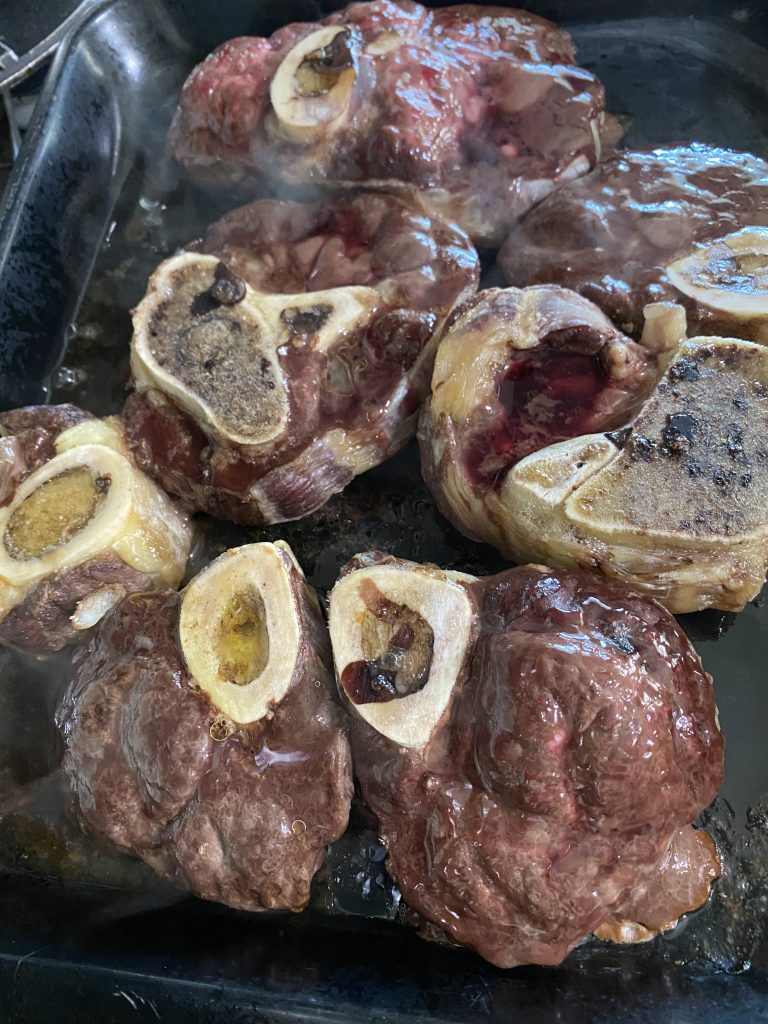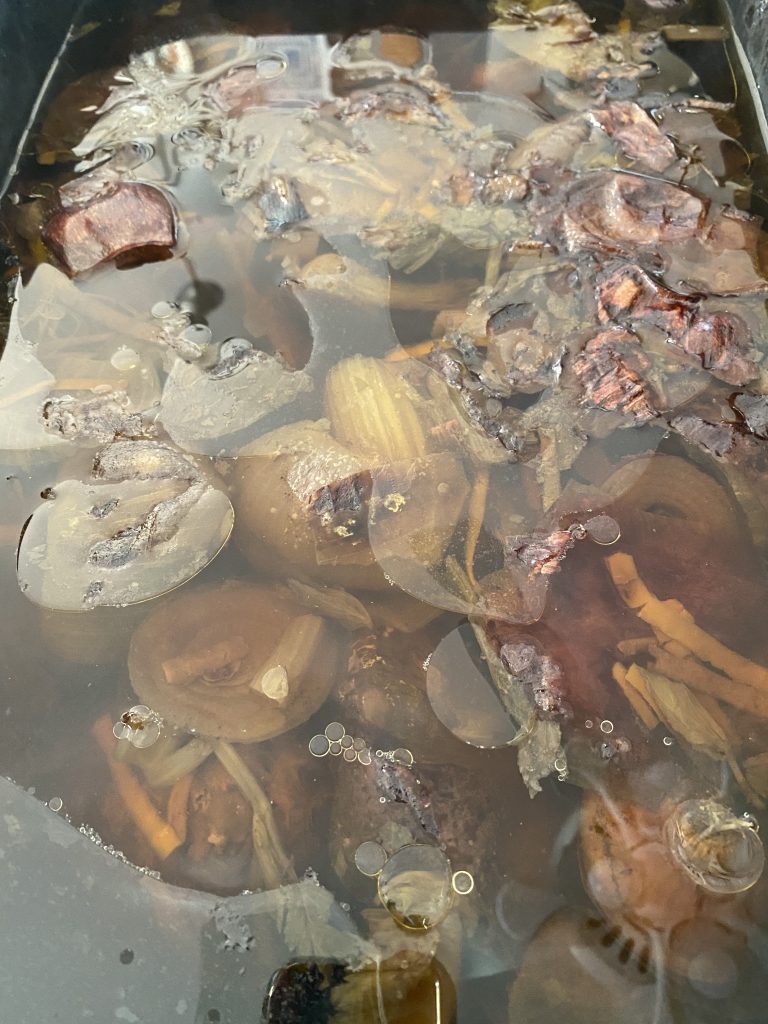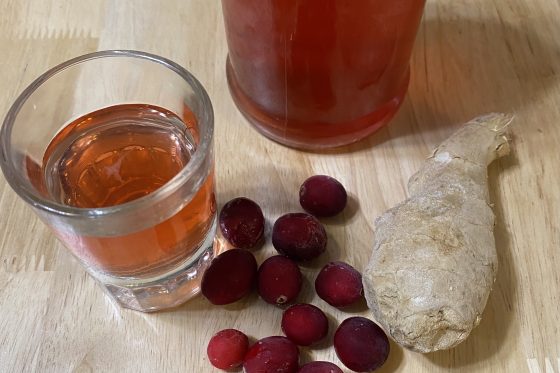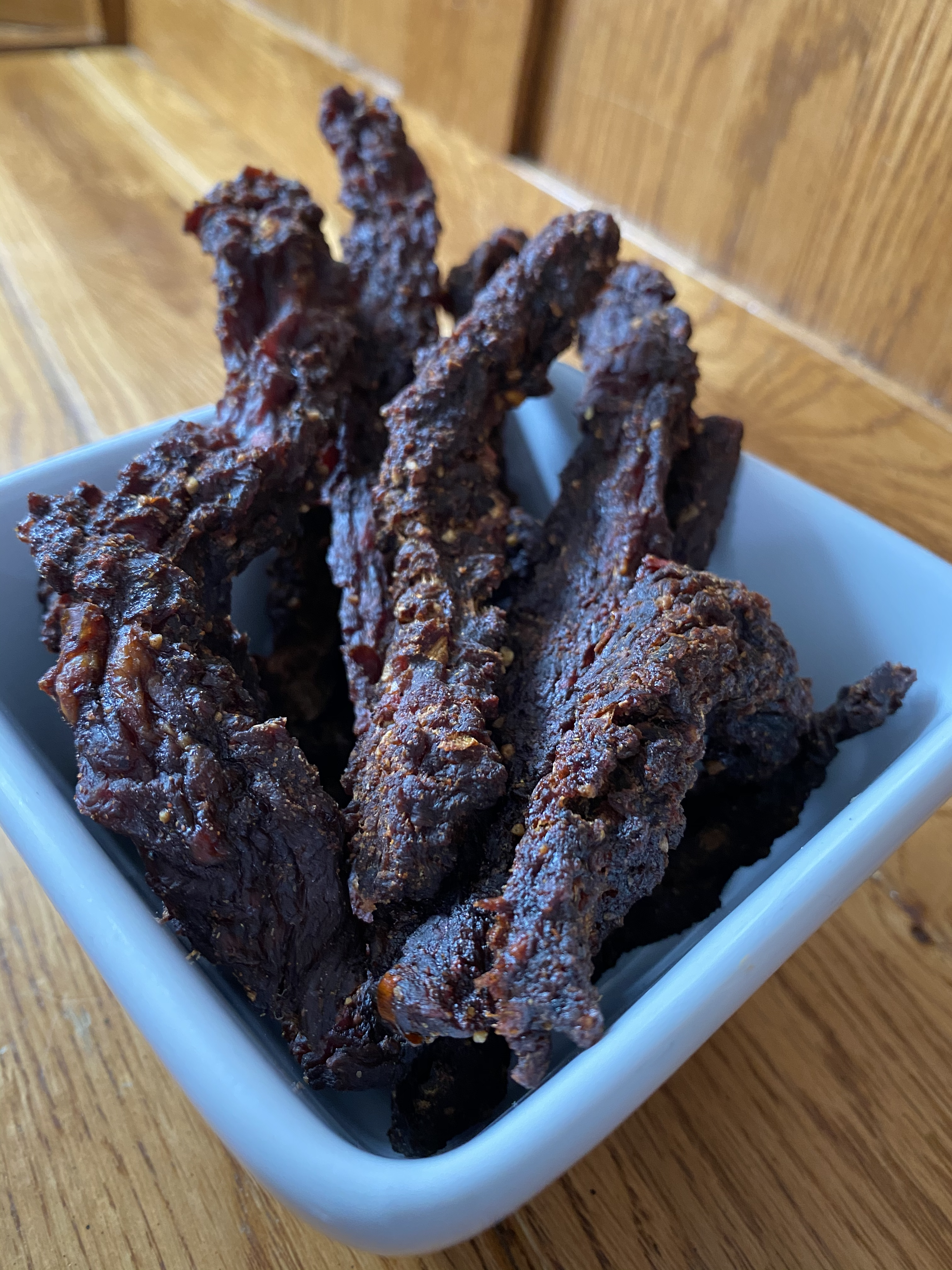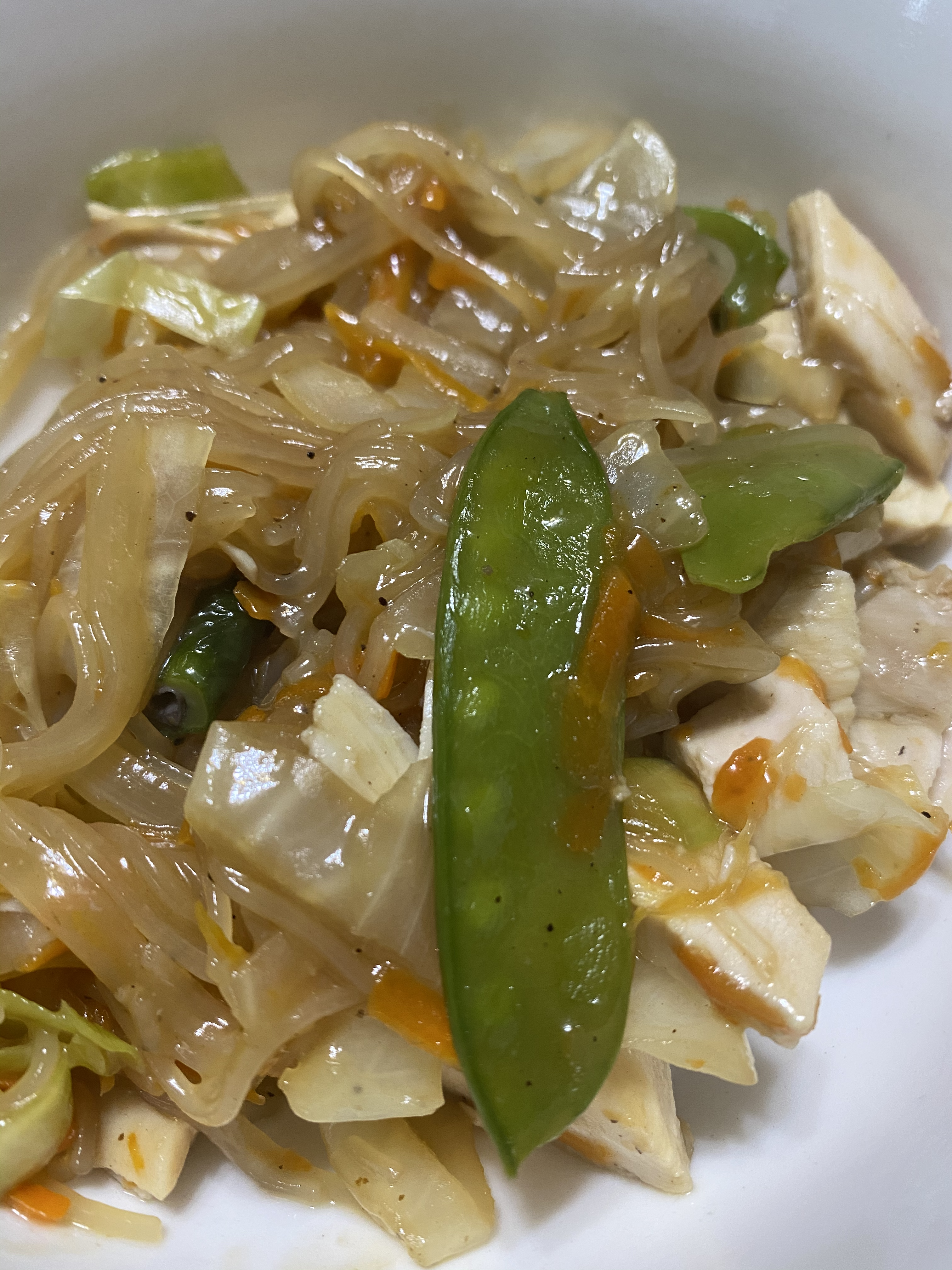Bone broth is an amazing elixir. It can be used in so many ways. Bone Broth is extra healthy when homemade from grass-fed/pastured animals and organic vegetables. It is also very economical, you use what you have and make the most from your grass-fed poultry and meat. I have not bought broth or stock from the store in nearly two decades.
There are several ways to make it
You can make bone broth in a crockpot, on the stove, or in a large electric roaster. Some people like to make it in a pressure cooker to save time, but I am not a fan of doing that. The slow simmering is what helps release the maximum nutrients from the bones and give you the healthiest broth.
We like to make large batches of stock at a time and freeze it, so we make it in a large electric roaster. Once it is done, we strain it, allow it to cool, and freeze it in plastic freezer containers. I don’t like putting hot food in plastic, so I make sure is at room temperature before we pack it into the containers. Freezing in glass, I had too much breakage, even when leaving adequate head space, so I stopped using glass in the freezer. I was given a pressure canner this past summer, so I do plan to try canning some broth. It will save my freezer space and allow me to open it and use it right away rather than defrosting the broth to use it.
Chicken bone broth
We go through a lot more chicken broth than any other bone broth we make. Chicken broth is so versatile, and it is so comforting as a drink or in a soup. I use it as a base for cooking soups, grains, gravies, and more. We also frequently heat it up and pour it in a mug with some sea salt and black pepper to drink. It warms you up, makes you feel good. Chicken Broth can help you recover from illness. It is easy to digest and so great for helping your gut recover or heal. A bit in a dish instead of water (like when cooking rice) can up the nutritional profile with minerals, collagen and healthy fat.
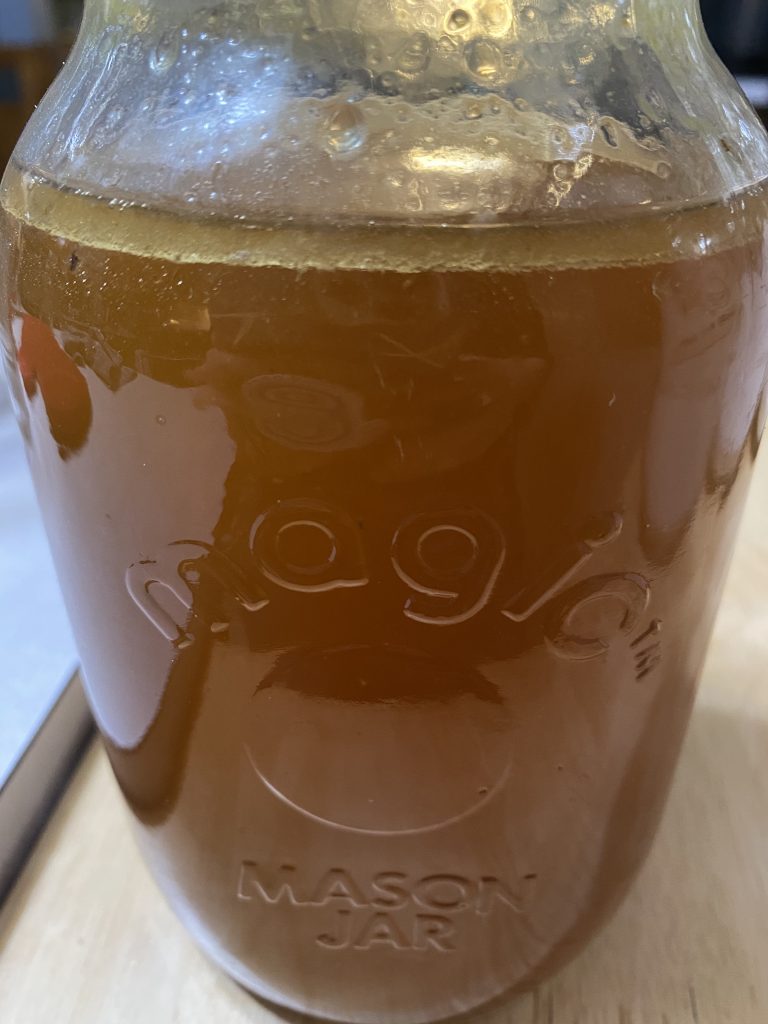
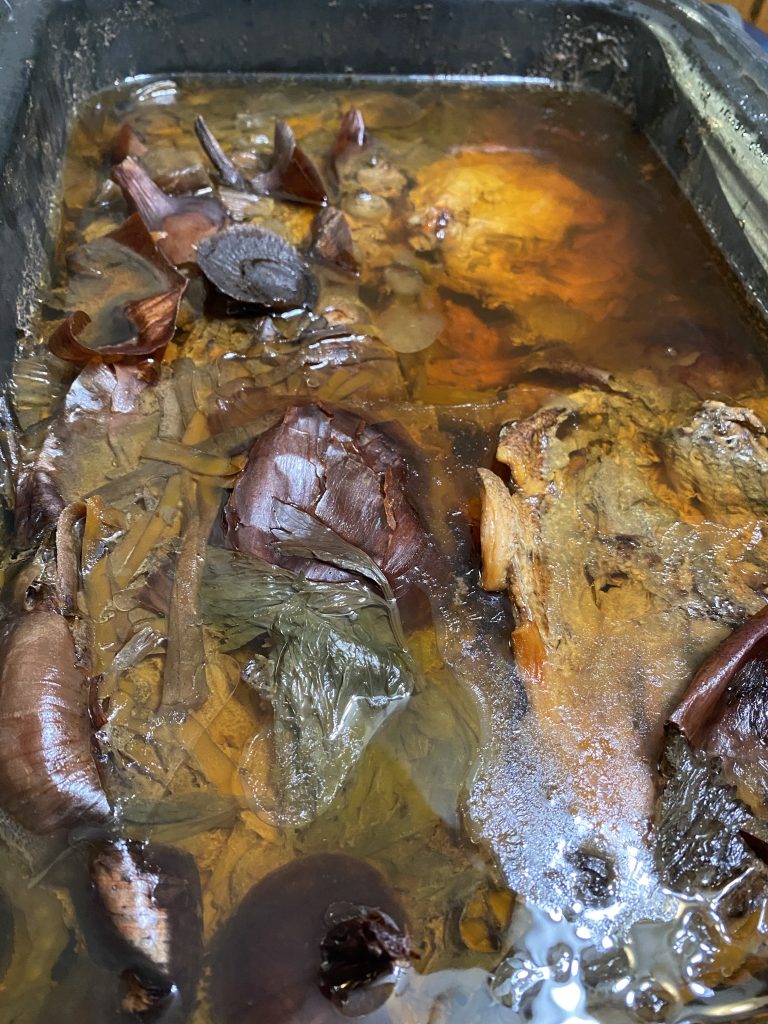
Pasture-raised local organic chickens
We get our chickens from a local organic farm. It costs more than typical grocery store chicken, but is less than the high-quality pastured chickens at Whole Foods or from a delivery meat subscription. They are pasture-raised and no saline or fillers are injected when they are processed.
We order in the winter/early spring for summer and fall delivery. Our annual order is about 80 chickens. We order them all as whole chickens. They come fresh from the processor and we freeze them. If we need boneless, skinless chicken or cut up bone-in chicken pieces, we just cut the whole chickens up ourselves. We have gotten our chickens from RC Organic Farms for nearly two decades. They are fantastic and we love knowing our farmers. We also get our lamb from this farm. Jackie and Steve Good are amazing people and we are so happy to support their farm and family.
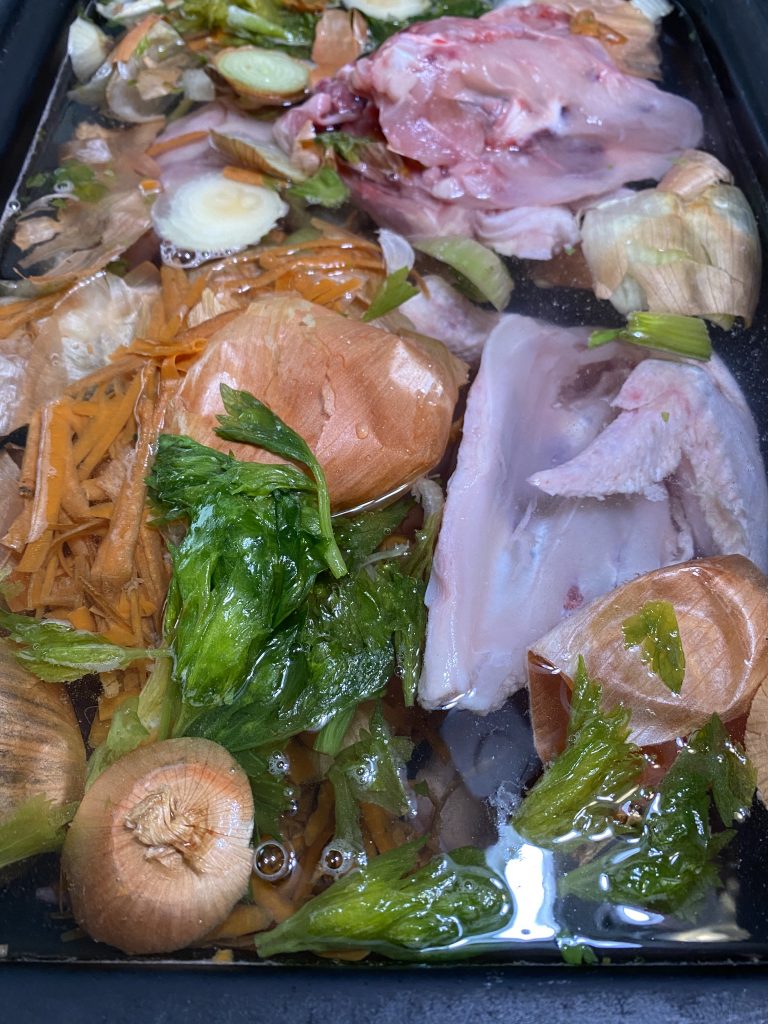
Economical broth
We use our chicken bones to make the broth. If we use a whole chicken to roast or make soup, we save the carcass to make broth. When we need cut up chicken we save the back and wing tips for broth. If we need boneless/skinless chicken we save the carcass for bone broth. We just put the bones in zip top bags and pop them into the freezer till we are ready to make broth. It really makes the costs of the quality chicken we buy go farther, with less waste.
To make broth we use about 3 carcasses or bones to equal about 3 chickens worth, at a time. Put the bones in the large roaster and add vegetable scraps. Another component we use is chicken feet (they are all cleaned when we get them..we order them when we order our chickens), usually, we add 2 feet per carcass to your bone broth, it helps it gel better.
We save scraps when we prep vegetables to cook, so carrot peelings, celery ends and middles, onion ends and peels, stems from parsley, skin and ends from cloves/heads of garlic. Scraps are saved in a zip-top bag and put in the freezer. We use one to two-gallon bags full per batch of stock. You can just use a couple of carrots cut up, an onion quartered with the skin on, and some celery if you don’t have scraps. We just save our scraps, as it reduces waste and stretches our food dollar.
I don’t advise on using any of the cruciferous vegetables or scraps. Cruciferous vegetables are very healthy, but can give your broth a bitter flavor when they are cooked for so long. We compost any scraps we don’t use for broth. You can add potato peelings, but due to the starch, they will make your broth cloudy and probably a bit thicker with extra sediment from the starch.
Bone broth added ingredients: Vinegar and salt
When we make stock we add some vinegar to the pot. We also add some unrefined sea salt. You can add other herbs if you want, but I prefer to add those when I use the stock rather than cooking them for a long time. We then fill our roaster pan up with water and set it at about 350 degrees F. We cook chicken stock for a minimum of 24 hours. After it has cooked we let it cool for a bit and then strain and cool to room temperature. Once it is cool, we package it for the freezer. We package some larger containers of 8 cups or more and we do some with just a cup or two. That way we can pull out what we need to defrost.
Beef Bone Broth or Lamb/Goat Bone Broth
We get a whole cow as freezer beef, every year, from a local organic farm, Marsh Haven Farm is our current beef farmer, where the beef is grass-fed. The processor packages bones as soup bones. Some have meat on them and some do not. We also save any bones from roasts, especially if we cut them up for other purposes such as stew meat. Any saved bones go into a zip-top bag in the freezer till we are ready for stock making.
We also get 2 lambs a year (from the same farm as our poultry). Lambs are small animals, so there aren’t too many bones, we usually just add a pack to the beef bones when we make broth. Summer of 2020 we split the purchase of a goat from our local County Fair Animal Auction. Goats are also small animals, so there were not a lot of bones in our half, we just used them like our lamb bones and mixed them in with the beef bones when we made stock.
Roasting bones first
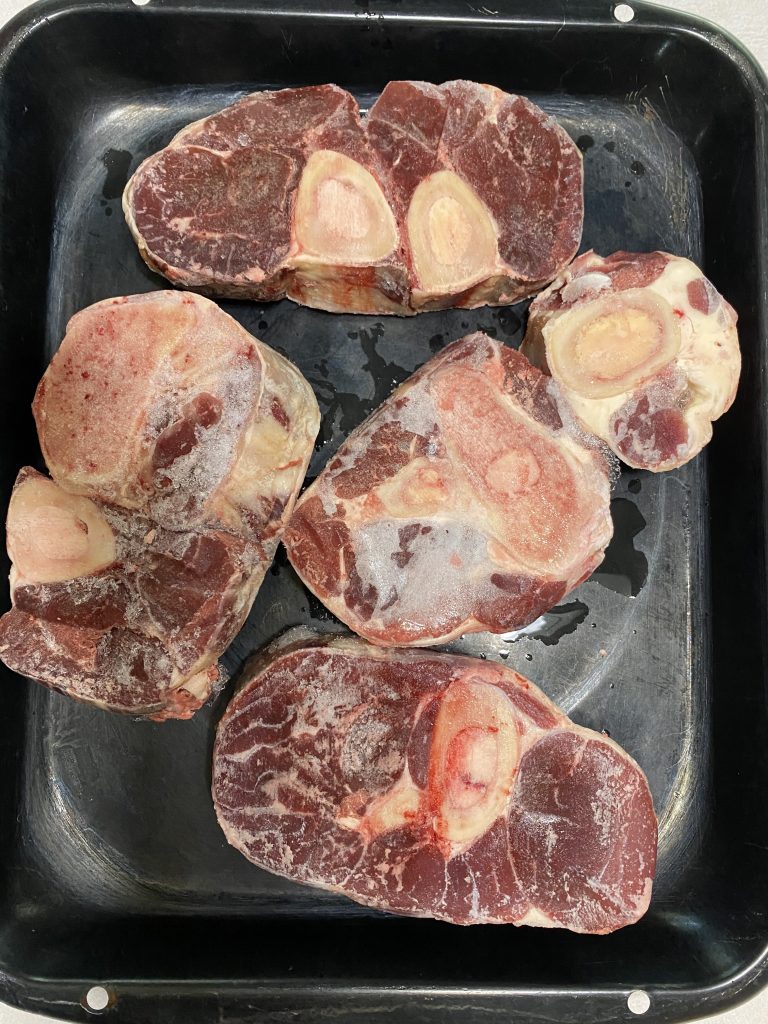
When making Beef/Lamb/Goat stock we always roast the bones in the oven before we make the stock. It give the stock a richer color and flavor. Once the bones are roasted we put them in the pot/pan then add the vegetable scraps, vinegar (about 1-2 Tablespoons per package of bones…we usually do a 1/4 cup per large electric roaster full), and sea salt.
We simmer the stock at about 350 degrees F. for about 36 hours or more. Then we do the same as with the chicken stock. We cool it, strain it and package it for the freezer. However, since the beef bones tend to have meat on them, as we strain it, we pull the pieces of meat out and put them on a plate to cool. Once cool, we pick off any grizzle, lingering fat, etc and we use the meat to make a delicious vegetable beef soup.
